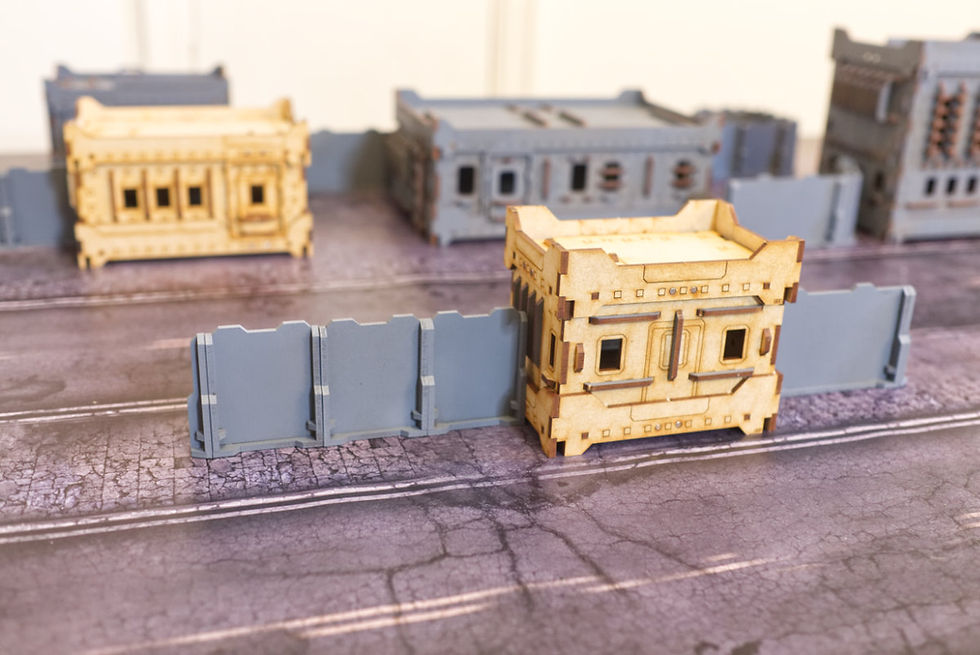The city continues to grow.
- Dom
- Apr 13, 2019
- 3 min read
"The streets are cracked, and course weeds tear at my legs as I move slowly between the buildings. The radio crackles and hisses as the sergeant whispers orders to the squad. The Xenos scum are silent, but I know they're here, somewhere, lurking in the long-deserted hab blocks of this nameless place..."

My adventures with Mad Gaming Terrain continue - this week I've been building more hab blocks - in particular the half sized block, and the 'alternative' block. As you can see from the image above, I've done them slightly differently this time - I've not painted the sprue first, but will spray them later. This is a decision I made primarily because I ran out of paint, and haven't been able to get any more yet!
As usual, the buildings were both easy to assemble, and customisable through the hole network system (allowing for a variety of bits to be added to each building to make it look unique). They fit well with other blocks and walls that I've already talked about, too.
The alternative hab block is the same size and shape as a standard one. The difference is to do with the placement of the doors. As you can see below, they've been designed so that the entrances on the two longer walls are at the opposite ends to the standard block - which means you can easily line things up internally to create rooms.

This means that not only can you create some really complex layouts externally, but that they will make sense when your armies get inside, too. As you can see above, the genestealers have spread out between the two rooms - you can imagine how cool this will be when there are ten or twenty rooms in an enormous complex building, with different units moving between them as they battle.
You can also see the half block in the image above - and it is what it sounds like! It's exactly half the size of a standard hab block, and this gives you even more flexibility in creating layouts. On my gaming mat, there are some narrow strips of paving which the half block fits on perfectly, so this gives me more options to build interesting cities.
As is normal with this terrain, the roofs can be removed for play (as in the photo above) - but they can easily be placed back again, and can indeed carry miniatures too, as the next picture shows.

While we're on the subject of the roofs, there are actually two ways of removing them. You can take the whole thing off, include the fascia panels around the edge, or you can take just the roof panel off (the easiest way is to hook your finger through the trapdoor hole and lift). You can see this below.

This means you can still use the magnets and holes in the fascias while the roof is off - although it's more fiddly to take it off this way, I can imagine times when this may well be useful (especially if you're using walkways to connect buildings together).
Of course, you can stack the buildings too. This is because of the ingenious way in which the bases are designed, with little cutouts to fit over the walls of any building below.

All this means that there's a huge versatility in building this terrain, and in the ways you can put it together. Because of the magnets, it's also extremely quick to create complicated setups, and to change things around. With a relatively small set of terrain, a huge number of layouts can be created. I've shown some simple possibilities in the images below, using just a few of the buildings. This is brilliant for wargaming, especially when you consider that the interiors are still easily accessible for play even when things are stacked (you just lift the tops off, or the buildings on the top if they're in a stack!) The internal ladders and roof / floor trapdoors mean units can move up and down inside buildings easily too, which will lead to some quite intense battles. I'll soon play a game or two with this terrain, and will let you know how it goes - but I think there are a few more bits to add first.







































Comments